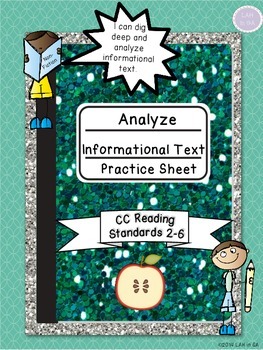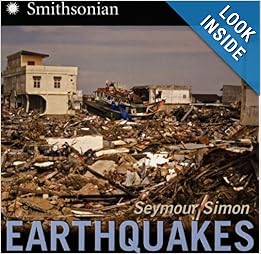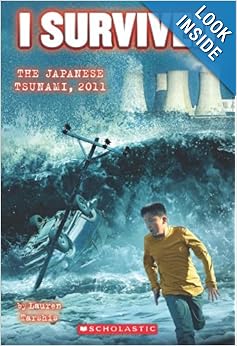We are currently in our Earth Science unit, and supplementing with texts is so helpful for the kids to be able to see land forms and read all about the land forms. One of the best sources of engaging text with tons of pictures are books by Seymour Simon.
Seymour Simon Images from Amazon
I have both of these books, bought them through Amazon a few years ago and they are always favorites of my kiddos. I do not put them in my student library, instead I save them for when we study Earth Science and then the kids are really excited about getting a chance to read them!
Seymour Simon's science texts teach the content alongside vivid images that are often breathtaking. They provide images that capture the readers attention. The text is not overwhelming and provides explanations of the content, along with examples of locations of events. They also include cause and effect explanations that further explain the topics.
There are tons of other texts by Seymour Simon as well as apps. If you are looking for a way to integrate reading in science or texts to supplement your lessons, his books are an excellent place to start.
If you are looking for a book to read aloud to your class, I highly recommend Quake! Disaster in San Francisco 1906.
 |
| Quake! Image from Amazon |
Quake! is an incredible story of how 2 young boys survived the San Francisco earthquake of 1906. The story is loaded with factual information about the earthquake and the effects of the disaster. The story also focuses on how different groups of immigrants were discriminated against in different regions, this book discusses the poor treatment of Asian immigrants along the West Coast. Since 5th grade also studies immigration this book integrates topics from our social studies curriculum, our science curriculum.
This historical text integrates social studies, science, and factual details and images; you really can't get much better than that!
Another book I have recently purchased, but have not read, that I plan to share with my class is I Survived The Japanese Tsunami, 2011. This series of books is very popular with students. I have a Scholastic Magazine with an article about the tsunami from 2011 that was written by Lauren Tarshis, and it is always one of their favorites. I was excited to see this book, and knew that I would share it during my earth science unit.
Students will more than likely the events from this tsunami, so it is a great text to share with them.
I also want to share a document that I created to use with my students to help them with analyzing informational text. I know that my students can connect with text, but they continue to struggle with analyzing text closely and citing evidence.
As part of a book study at my school, we are reading, Pathways to the Common Core Accelerating Achievement.
In the section we just completed, the text emphasizes closely reading text and citing with evidence explicitly mentioned in the text. It is a tough skill for many of my students. So, I decided to create a practice sheet to guide them through standards 2-6.
The questions encourage students to go back to the text to locate information. The first question seems simple, "What did you learn from the text?," yet while administering Foutnas & Pinnell benchamrks, I was surprised how many of my kiddos wanted to tell me what they already knew, instead of details from the text. Obviously, it is not such a simple question.
I plan to use this with my weekly fluency articles (which this quarter will focus on major social studies and science topics), and with informational text. I will model how to answer the questions, then have students answer questions independently before we discuss the topics. After discussing the text, students will be given a chance to add or revise their responses.
I hope that continuously exposing students to the questions will help them think more about their text as they read. Until then, we will keep practicing!
You can download the informational text practice sheets for free, here. If you download the document, please leave feedback to let me know what you think. If you use this with your students I would love to know about your experiences.
Don't forget to check out the other links for this week's mentor texts at Collaboration Cuties. Thank you to Amanda & Stacia for hosting this party! It always helps me think about texts I want to use with my class. Sometimes, it simply reminds me to pull out some of the books I might have forgotten about. A lot of times it helps me discover a text I did not know about.
Hope everyone has a fabulous day and discovers something inspiring!
Another book I have recently purchased, but have not read, that I plan to share with my class is I Survived The Japanese Tsunami, 2011. This series of books is very popular with students. I have a Scholastic Magazine with an article about the tsunami from 2011 that was written by Lauren Tarshis, and it is always one of their favorites. I was excited to see this book, and knew that I would share it during my earth science unit.
Students will more than likely the events from this tsunami, so it is a great text to share with them.
I also want to share a document that I created to use with my students to help them with analyzing informational text. I know that my students can connect with text, but they continue to struggle with analyzing text closely and citing evidence.
 |
| Fonts by Lovin' Lit, Graphics by: Zip-A-Dee-Doo-Dah, Glitter Meets Glue Designs, Graphics from the Pond, & JCSweetpea |
 |
| Image from Amazon |
 |
| Informational Text Analysis Sheet |
I plan to use this with my weekly fluency articles (which this quarter will focus on major social studies and science topics), and with informational text. I will model how to answer the questions, then have students answer questions independently before we discuss the topics. After discussing the text, students will be given a chance to add or revise their responses.
I hope that continuously exposing students to the questions will help them think more about their text as they read. Until then, we will keep practicing!
You can download the informational text practice sheets for free, here. If you download the document, please leave feedback to let me know what you think. If you use this with your students I would love to know about your experiences.
Don't forget to check out the other links for this week's mentor texts at Collaboration Cuties. Thank you to Amanda & Stacia for hosting this party! It always helps me think about texts I want to use with my class. Sometimes, it simply reminds me to pull out some of the books I might have forgotten about. A lot of times it helps me discover a text I did not know about.
Hope everyone has a fabulous day and discovers something inspiring!









I love Seymour Simon's nonfiction books! They are all awesome!! This post is jammed full of great information! we had to read Pathways to the Common Core as well. Thanks for the freebie and for linking up!
ReplyDeleteAmanda
Thanks for hosting and swinging by to read/comment!
DeleteGreat book choices and information! These hit on a few 5th grade standards, and the freebie will work well with our basal and/or other nonfiction books. Thanks for sharing.
ReplyDeleteCarla
Thank you for the comment Carla. I appreciate the comment and I agree they will help with lots of different texts. I wanted something somewhat general that would help with the analysis of the texts.
DeleteThis comment has been removed by the author.
ReplyDelete